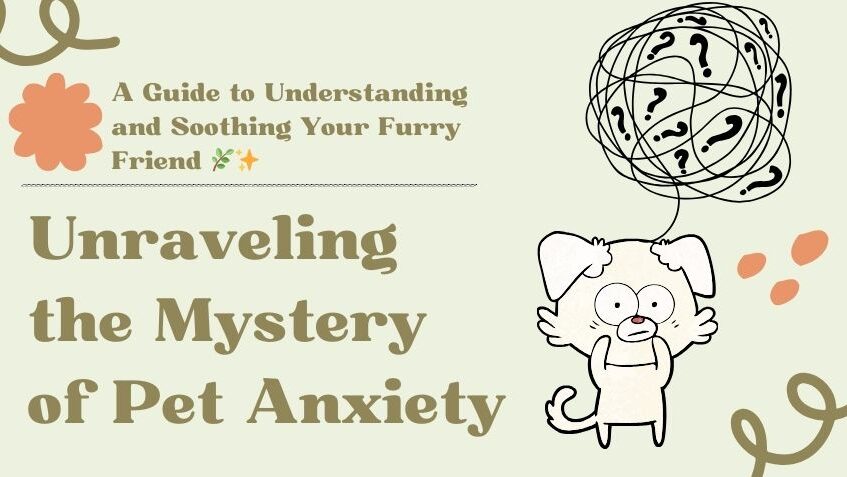🐾 Unraveling the Mystery of Pet Anxiety: A Guide to Understanding and Soothing Your Furry Friend 🌿✨
Is your pet showing signs of restlessness or unease? We’re here to shed light on pet anxiety and offer compassionate solutions to bring comfort to your cherished companion. 🐶🐱
🤔 Recognizing the Signs of Pet Anxiety:
1️⃣ Excessive Panting or Pacing: If your pet is constantly on the move or panting excessively, it could be a sign of heightened stress.
2️⃣ Destructive Behavior: Chewing furniture, excessive scratching, or other destructive habits may indicate anxiety, especially when you’re away.
3️⃣ Withdrawal or Hiding: Pets experiencing anxiety might withdraw from social interactions or seek refuge in hiding spots.
4️⃣ Changes in Appetite: A sudden change in eating habits, either an increase or decrease, can be a manifestation of emotional distress.
5️⃣ Excessive Vocalization: Unusual barking, meowing, or howling could be your pet’s way of expressing anxiety.
6️⃣ Aggressive Behavior: Anxiety can sometimes manifest as aggression, even in pets that are typically docile.
🌈 Understanding the Causes:
1️⃣ Separation Anxiety: Pets may experience anxiety when separated from their owners for extended periods.
2️⃣ Changes in Environment: Moving to a new home, introducing new family members, or changes in routine can trigger anxiety.
3️⃣ Loud Noises: Thunderstorms, fireworks, or loud noises can cause anxiety in many pets.
4️⃣ Medical Issues: Underlying health problems can contribute to behavioral changes. It’s essential to rule out any medical concerns.
5️⃣ Past Trauma: Pets with a history of abuse or neglect may be more prone to anxiety.
Visit your veterinarian as early recognition, diagnosis, and treatment are essential.
You may also visit – https://www.facebook.com/angkopparasahayop





